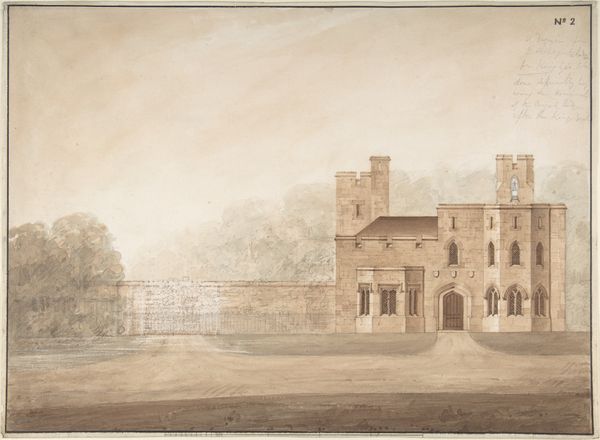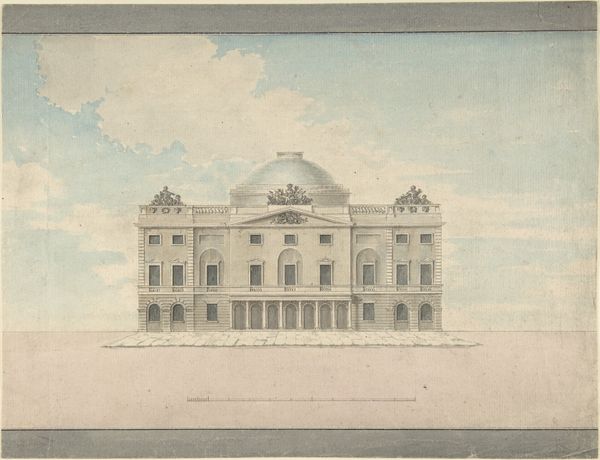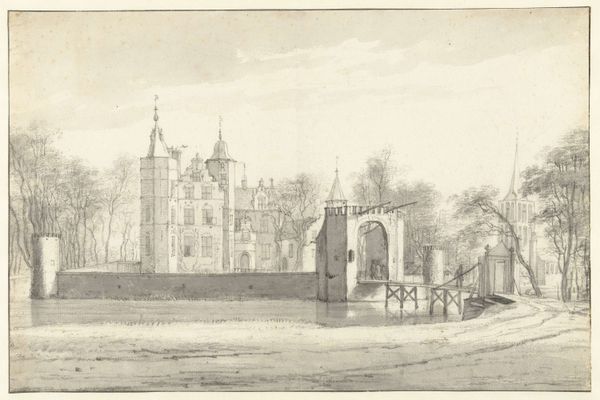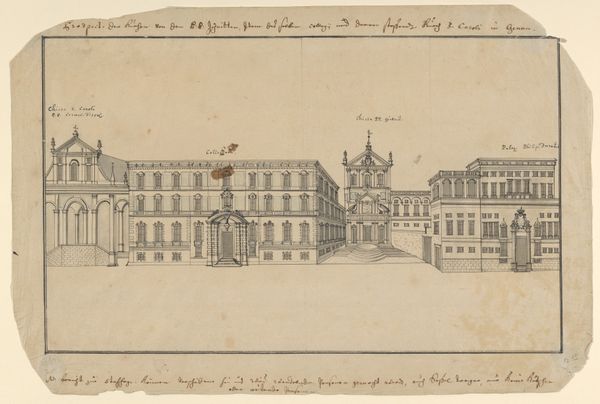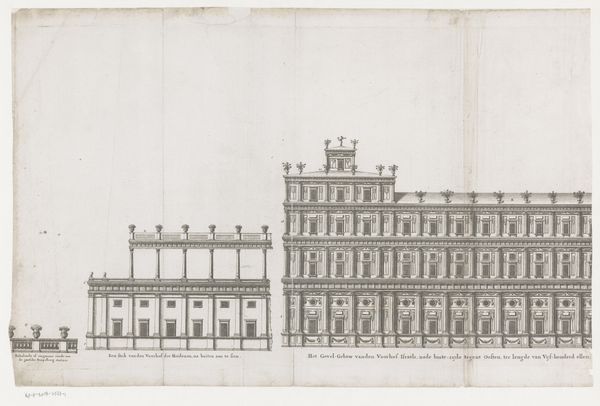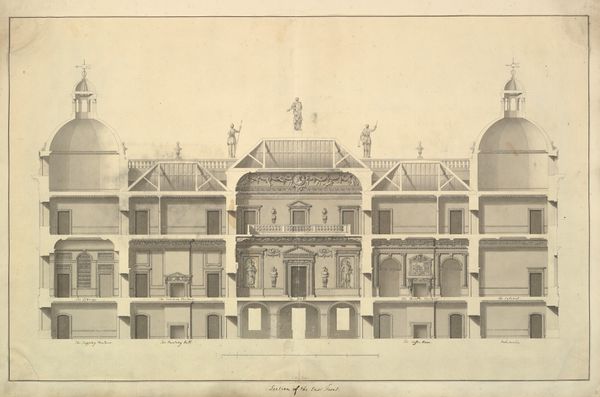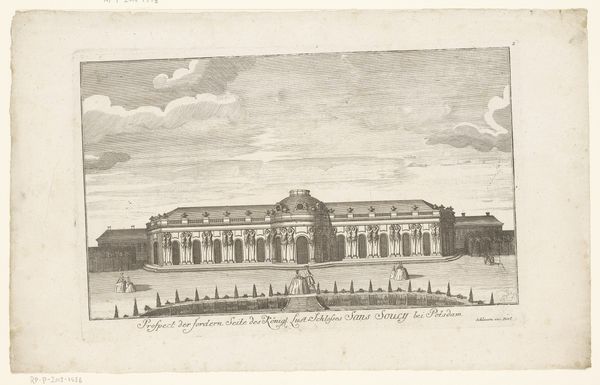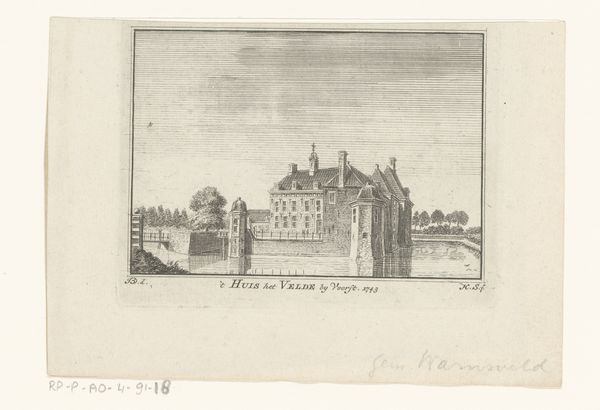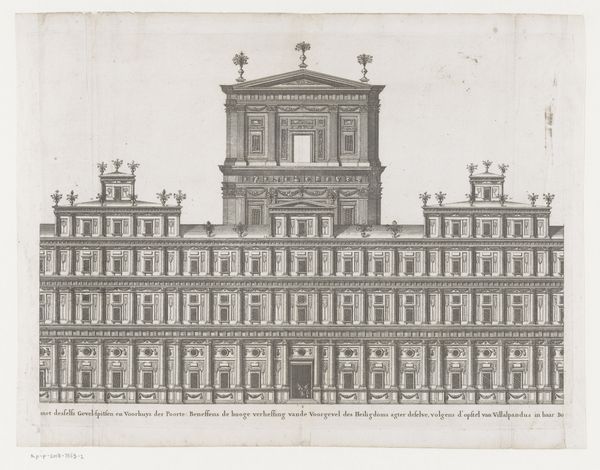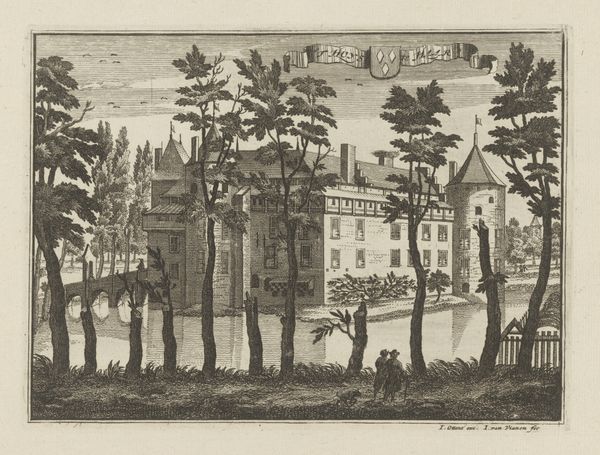
drawing, print, pencil, architecture
#
pencil drawn
#
drawing
# print
#
landscape
#
romanticism
#
pencil
#
architecture
Dimensions: sheet: 6 x 9 1/2 in. (15.2 x 24.1 cm)
Copyright: Public Domain
Curator: My initial impression is of… ghostliness. It’s delicate, faded, like a half-remembered dream of a building. The muted tones evoke a sense of quiet contemplation, of something solid rendered ephemeral. Editor: We’re looking at "The Old Admiralty in London," a pencil drawing made around 1844 by Carl Gustav Carus. It’s currently part of the collection at the Metropolitan Museum of Art. Curator: Carus! Of course. That romantic sensibility makes sense. I love the contrast between the subject – a grand, imposing edifice of power – and the fragile medium he chose. The Admiralty, normally a symbol of strength and naval might, appears vulnerable. It makes you think about impermanence. Editor: The choice to render architecture in a medium typically reserved for sketching suggests a blurring of boundaries. Is it a monument, or a fleeting observation? It does lend an almost nostalgic air to it. The Admiralty has always held significant cultural weight, overseeing the Royal Navy. This building represented Britain's global reach, its colonial power. Carus captures its likeness with this fragile style during an important part of English history. Curator: And in doing so, he elevates it, doesn't he? Or rather, questions its assumed solidity. It’s like he's inviting us to look beyond the bricks and mortar, to the ideas, the histories, and the feelings a place like this inspires. There's a dreamlike quality to the meticulous lines. I imagine him sitting, carefully noting the shadows, feeling the pulse of London around him. The air of England, so very different than Germany at the time, of course, made the entire endeavor new for him. I love to see foreign interpretations. Editor: Absolutely. And you have to consider Carus himself – a physician, a scientist, and a landscape painter associated with German Romanticism. It’s easy to consider his broader intellectual engagements which may have added nuance to this seemingly straightforward architectural study. I imagine a doctor observing the English building, considering not just its aesthetic but also its cultural body. Curator: A body politic! I love that thought! Carus offers us more than just a building; he gives us a whisper of history, a fragile memory etched in pencil. That's what lingers with me: not the cold authority of the Admiralty, but the artist's soft, insightful gaze. Editor: A fitting summary! I’d only add that it reminds us that even the most imposing symbols of power are subject to the artist’s vision, open to interpretation, and ultimately, to the passage of time.
Comments
No comments
Be the first to comment and join the conversation on the ultimate creative platform.
